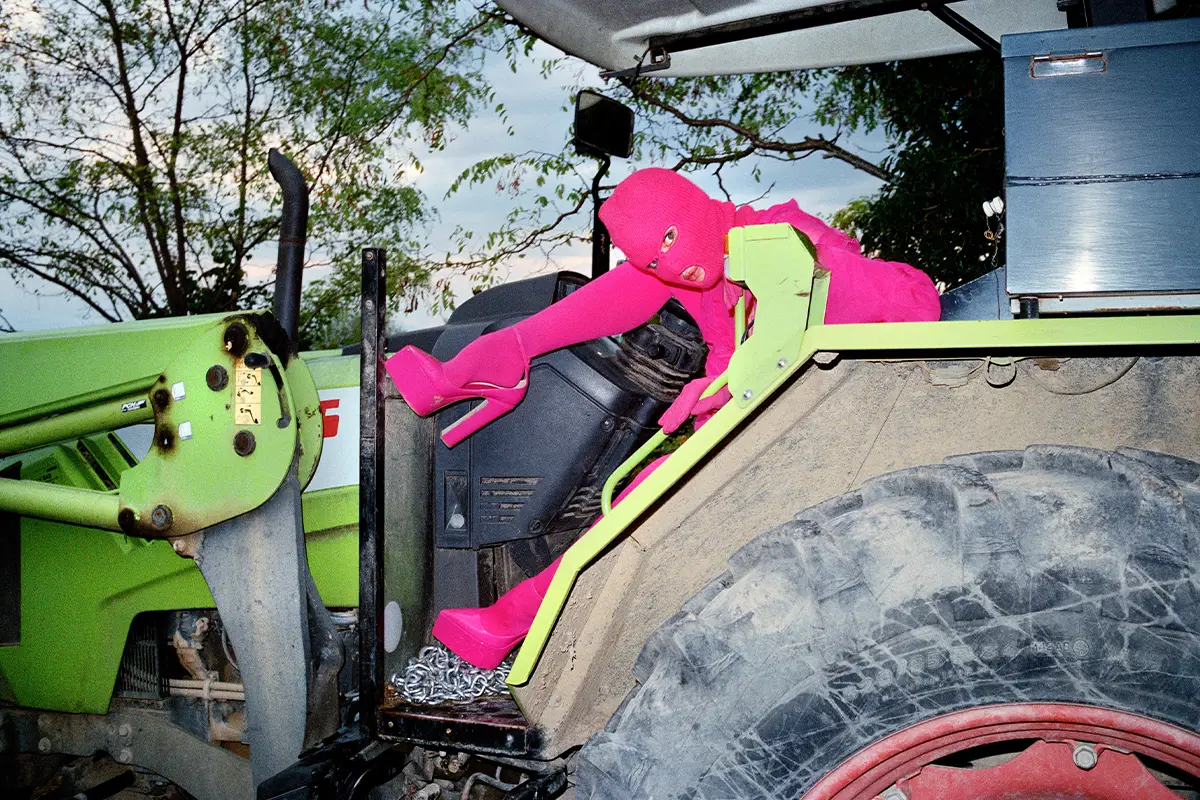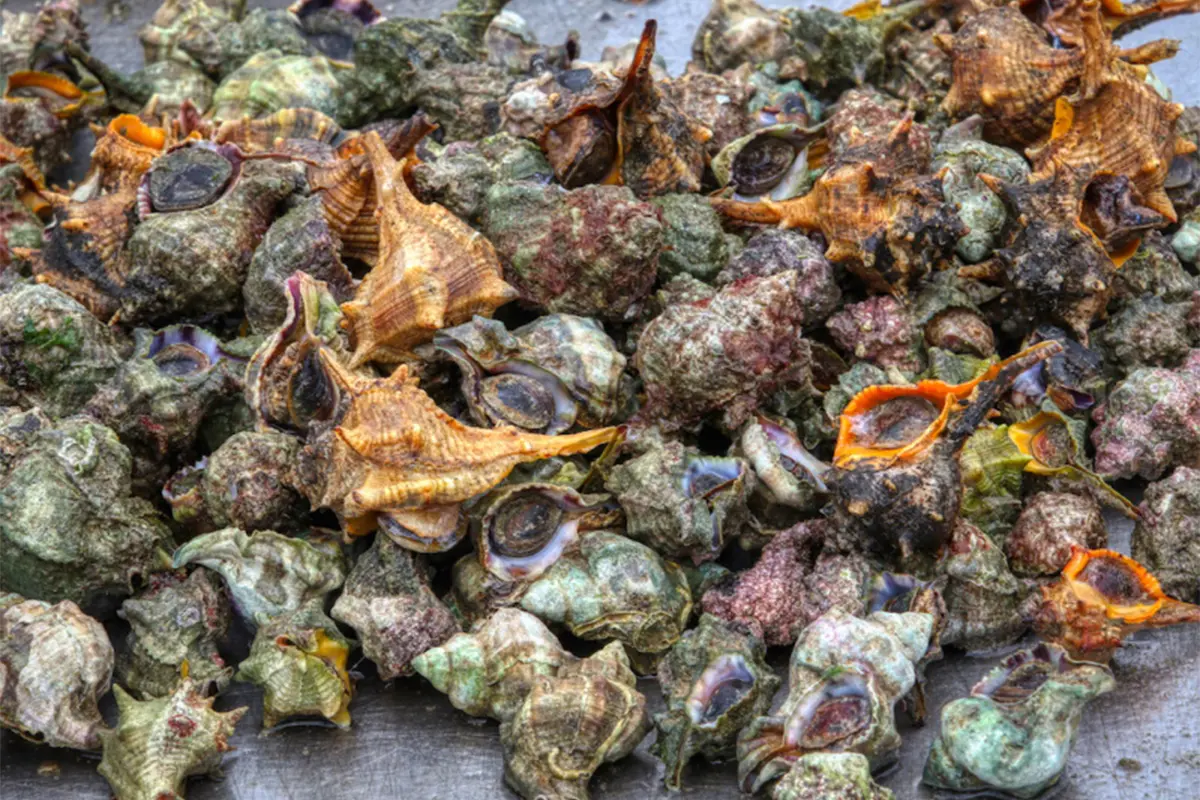History and specifics of a century year old pigment. Valentino’s dare to create a monochrome collection that has given new lifeblood to the brand
Valentino and the color block: the visual revolution of identity
After packaging and flagship stores, the creative directors of the fashion houses leave the task of telling the space of intangibility to the individual colors. Valentino has always made extensive use of the shades of plum, lilac, burgundy and violet. They are all descendants of the Rosso Valentino, the nuance that came from an image etched in Valentino’s memory when he was still a young student, when at the Barcelona Opera House his gaze was captured by a lady wearing a red velvet dress.
In the history of the brand, it is no coincidence that the associations between color and maison were redefining the rules of a game of captivating combinations, the ownership of a shade, which willingly replaced the meaning of a brand in brand recognition, and had increasingly defined a role.
Colors have a strong symbolic, evocative, invigorating power and Pierpaolo Piccioli, Valentino’s creative director, has in fact turned it into something more: a distinctive sign, a code, an affirmation of absolute individuality. With Pink PP, Valentino maison not only ‘thinks in pink’, but makes pink a real philosophy, a code, an identity.
«Using a single color changes the perception of what your brain sees and you are forced to observe the surfaces, the materials. Everything remains suspended. You don’t pay attention to genres, but you see the authenticity of people», explained Pierpaolo Piccioli on the occasion of the debut of the collection on the Parisian catwalks. A collection created with a shade of pink specially studied by the brand in collaboration with the Pantone Color Institute.
Pierpaolo Piccioli: monochrome is a radical gesture
The choice of monochrome is a radical and audacious gesture, a manifesto. Piccioli explained he was reading about Lucio Fontana, about his work on monochrome to find new spaces, and that was where the inspiration of a monochrome collection came from. A color that was a way to find a moment for himself, the first color he thought about as the embodiment of the brand because it is always present in Valentino’s collections.
On the digital front, the hue that now distinguishes the brand will be interpreted by a range of creatives in photography, art and video with works that have reinterpreted color in reference to themes of inclusiveness.
The palette is vibrant across the board, but the purplish shade stood out, as it was the same used on sheer Greek dresses, laser-cut men’s suits, tent-style blouses and tailored blazers, as well as updates to key Valentino handbag shapes.
Tyrian purple: history and chemical composition
Also known as Phoenician purple, royal purple, imperial purple, or imperial dye, Tyrian dates back several millennia to the Bronze Age when the Phoenicians from Tyre on the Levantine coast produced it for the ancient Greeks, Persians, Byzantines and Romans to clad emperors and kings with luxury textiles. Therefore, the Tyrian purple became a giant status symbol signifying wealth, power, and prestige. During the Roman Empire, one pound of this precious dye was priced at approximately three Troy pounds of gold – roughly $66,000 in today’s currency.
It ended up being so rare to source and to use, that at one point during the Roman Empire, the color was banned for everyone, except for the Roman Emperor himself who was the only one to have access to the resources to make it. Everyone else caught wearing the color was sentenced to death.
The color itself is composed of a mixture of indigo dyes: indigo, monobromoindigo and dibromoindigo with smaller amounts of the corresponding indirubins. The structure is similar to indigo with the sole difference of the two bromine atoms attached to the six-membered rings. It has been used almost exclusively for dyeing textiles and not as a pigment for painting. It is very light and stable.
The problem with traditional harvesting and extraction of the Tyrian purple dye
Current producers extract and harvest Tyrian purple from the mucus of several species of predatory sea snails in the family Muricidae, rock snails or murex shellfish originally known by the name ‘Murex’. Approximately 10 000 of these predatory sea snails, weighting around 54 kilograms, are required to make one single gram of the dye. An impracticable, expensive and environmentally unfriendly production chain.
The glands of the larger shellfish are separated from the rest of the animal, but smaller varieties are crushed whole, shell and all. The source of the dye is described as a small whitish ‘vein’ situated transversely under the shell. The colour precursors are contained in the hypobranchial gland. After the vein is extracted, it is requisite to add salt. They are left to steep for a period of three days, and no more, for the fresher they are, the greater virtue there is in the liquor. The concoction is then set to boil in tin vessels.
Phoenicia – Sidon, Tyre, and across the Mediterranean
Every hundred of amphora is ought to be boiled down to five hundred pounds of dye using moderate heat, for which purpose the vessel is placed at the end of a long funnel, which communicates with the furnace. The liquor is skimmed from time to time, and with it the flesh, which necessarily adheres to the veins.About the tenth day the whole content of the cauldron is in a liquified state, upon which a fleece, from which the grease has been cleansed, is plunged into it by way of making trials. The liquor is kept on the boil until the colour reaches the desired shade.
Since the best result is obtained working with live animals, the process requires substantial labour, and as a result, the dye is highly valued.Ancient dye producers all but drove the murex species to extinction along the coasts of Phoenicia – evident in the vast deposits of the shells excavated on the outskirts of Sidon, Tyre, and across the Mediterranean. The current distributions of the various species are not necessarily the same as those in former times.
The first Tyrian purple dye produced via synthetic biology
Conagen, a biotech company based in Bedford, Massachusetts, proposes an alternative to labour intensive and environmentally unfriendly extracting methods. The company was founded in 2010 and offers synthetic biology solutions mainly focusing around sourcing either rare or unsustainable ingredients for a variety of different markets.
In the case of Tyrian purple, it is not a petrochemical synthesized solution. In January 2023, Conagen announced the scale-up of sustainable, cost-effective Tyrian purple produced by precision fermentation and bioconversion. It is a natural dye which can help textile companies to reduce their environmental impact.
Casey Lippmeier, Conagen’s Senior VP of Innovation
Lampoon spoke to J. Casey Lippmeier, Conagen’s Senior VP of Innovation. «We thought about what kind of molecules we can make using our own technologies and by doing some market research, we looked at where they might already exist in the world or what their current use might be for. We find things that are very difficult, rare or unsustainable to source, and in those cases we develop a synthetic biologic process to develop it instead».
The Tyrian purple technology is based on two of Conagen’s many key bioengineering platforms, which enable accelerated product development timelines for its competitive phenolics, terpenoids, proteins, and peptide molecules. Phenolics platform was used to make an important antioxidant, hydroxytyrosol, the active health ingredient found in oil, juice, and fruit in olives, and the other platform has optimized the production of different amino acid-based products, including the nutraceutical antioxidant ergothioneine, a ‘longevity vitamin’. Starting from here, they have developed novel enzymes which increase the conversion efficiency of precursors to the dye.
This colour-fast compound reduces pollution and carbon footprint, and offers an alternative to destructive methods involving the marine environment.
From the lab to the biomanufacturing facility: precision fermentation
Lippmeier explained the process they use starting from the laboratory. Precision fermentation, as they call it, is a little bit different from fermentation from antiquity, as it used to be done.
«It is fundamentally the same process but the difference is that now it’s highly controlled. A microbe is put into a tank, it is fed nutrients and it grows. We feed nutrients in the course of the fermentation itself, while also delivering a lot of oxygen. One of the most important feedstocks is sugar. We also feed them salt, nitrogen source, the same kind of fertilizer that it’s used in agriculture. They all are pretty affordable materials. These are a lot of extra steps that keep the organism in a precise growth state, and this is why we call it precision fermentation. It is still fermentation though, so it is not so different from brewing beer: the difference is that in the case of beer, it produces ethanol, in our case, it produces Tyrian purple».
260 thousand liters of fermentation
What’s started in the laboratory, it then gets scaled to the biomanufacturing facility in larger volumes to make the dye available for the textile industries, testing all the experimental parameters along the way to make sure the process is reproduced faithfully every time it gets larger.
The final result ends up being around 260 thousand liters of fermentation. At that scale, it is possible to make the product economically available for every industry.
«As far as the textile industry is concerned, we’re probably going to need more of it. It is one of the main polluting industries out there. There are ways to make Tyrian purple from synthetic organic chemistry, which we are also replacing. In some cases all of these dyes could be cheaper than the ones done naturally, but they take a lot of pollutants out of the environment».
Insights on biodegradation and wider availability for the textile industry
A lot of information about the biodegradability of this dye is already known, since the color is very old. The chemical structure of the one fabricated in the lab is exactly the same as the one found in the snails. Just like the other fast-dyes— Indigo for example, as it was mentioned before— it does fade. Over time, it will start to fade due to direct oxidation of the dye molecule itself and break down to harmless components that are found in the environment. Since it anatomically belonged to sea snails, Lippmeier explained that once in nature, the dye will start to become stable to a point that it needs to be in the environment. It will start to biodegrade and turn back into components that will be used by other microorganisms.
Tyrian purple economical needs to reach the largest world scale
To make Tyrian purple economical it needs to reach the largest world scale. «In many cases, depending on the molecule we’re talking about and the way we are doing it in the lab, it’s cheaper than anybody making it. In some cases, we might be more expensive. There’s a premium that people would generally pay for a fully sustainable and natural process to make something that might already exist. In the case of Tyrian purple, to make it as economical as possible, we have to reach that largest world scale. We’re not there yet, we’re trying to find partners in the textile industry to actually express an interest to buy it».
Conagen
It is a biosynthesis and biomanufacturing company from Bedford, Massachusetts. They have developed solutions within the food, nutrition, pharmaceutical, and renewable materials industries. They have created the first Tyrian purple dye produced by precision fermentation and bioconversion.




















